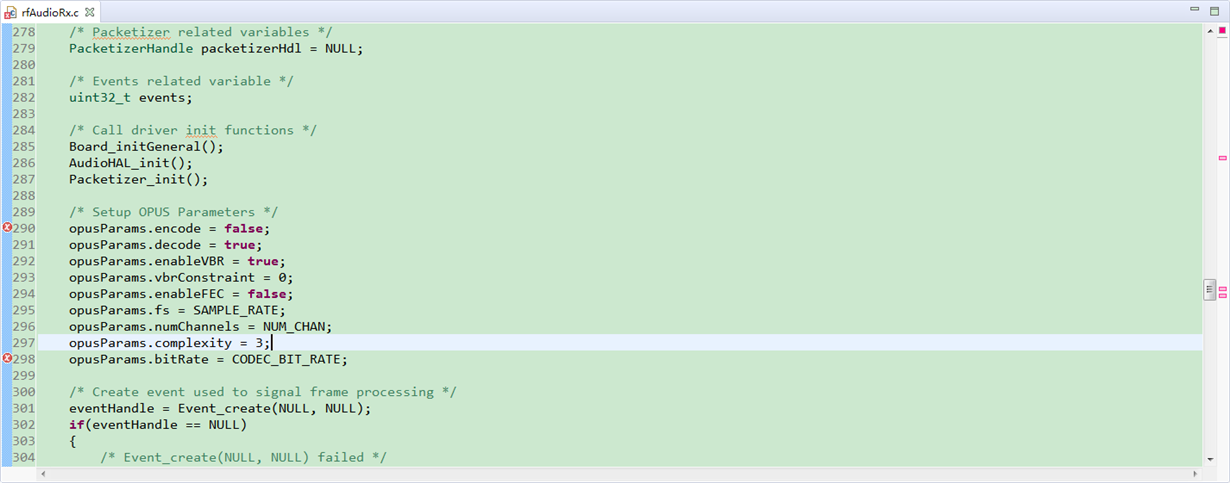Other Parts Discussed in Thread: CC3200AUDBOOST,
Tool/software: Code Composer Studio
Hi engineers,
Q1 I downloaded the official software and built, then occurred an error as shown below.
<Linking>
"../CC1312R1_LAUNCHXL_TIRTOS.cmd", line 107: error #10099-D: program will not fit into available memory, or the section contains a call site that requires a trampoline that can't be generated for this section. run placement with alignment fails for section ".bss" size 0x2528. Available memory ranges:
SRAM size: 0x14000 unused: 0x3e7c max hole: 0x24e0
error #10010: errors encountered during linking; "rfAudioRx_CC1312R1_LAUNCHXL_tirtos_ccs.out" not built
>> Compilation failure
makefile:172: recipe for target 'rfAudioRx_CC1312R1_LAUNCHXL_tirtos_ccs.out' failed
gmake[1]: *** [rfAudioRx_CC1312R1_LAUNCHXL_tirtos_ccs.out] Error 1
makefile:165: recipe for target 'all' failed
gmake: *** [all] Error 2
Q2 What content should I alter if I change setup "compression mechanism" of the demo "tfAudioTx/Rx"?
Q3 Why the board cannot generate I2S signal?
Best regards,
SeanOY



